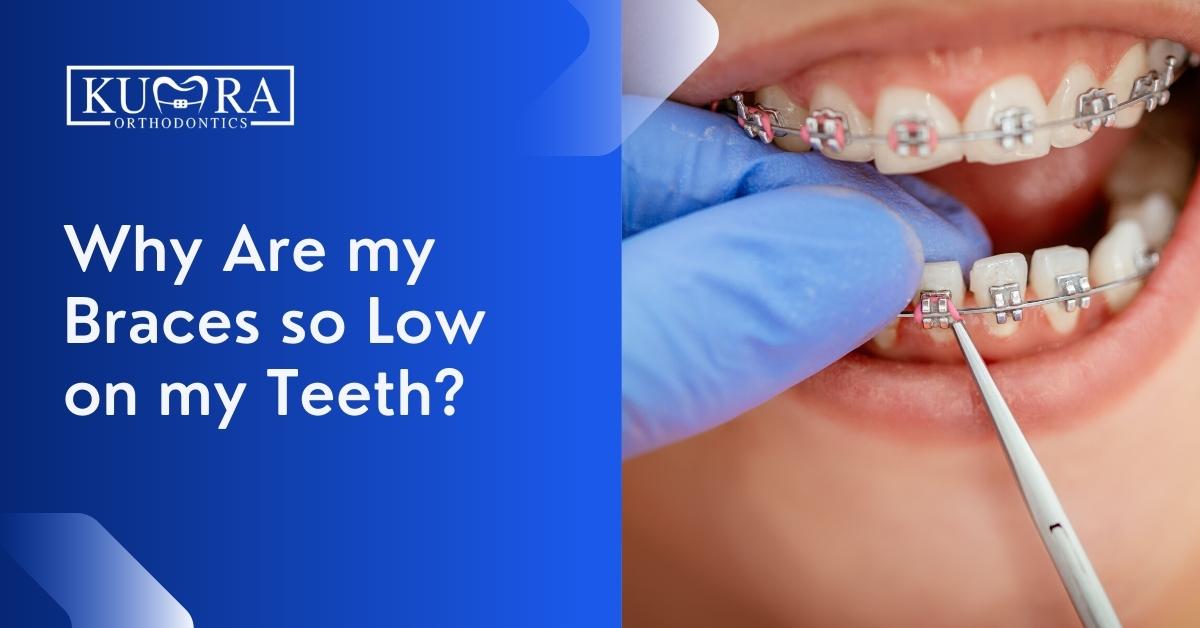What Sets Cumming Braces and Aligners Apart from Other Orthodontic Treatments
What Sets Cumming Braces and Aligners Apart from Other Orthodontic Treatments
Blog Article
Comprehensive Guide to Orthodontics Procedures for Remedying Dental Misalignments
In the realm of orthodontics, the journey to accomplishing a completely lined up smile involves a myriad of treatments customized to correct oral misalignments. From conventional dental braces to invisible aligners and even surgical alternatives, the area of orthodontics supplies a variety of solutions to address varying levels of dental irregularities. Comprehending the details of each treatment, including their systems, benefits, and possible disadvantages, is essential in making notified choices regarding one's orthodontic treatment. As we navigate through the thorough overview to orthodontic procedures for remedying dental misalignments, the elaborate information of each technique will certainly unfold, clarifying the path towards a unified and practical dental alignment.
Orthodontic Procedures Overview

Along with clear aligners and conventional dental braces, orthodontists might also recommend various other interventions like headgear, palatal expanders, or retainers to resolve particular positioning problems (orthodontics). These treatments are customized to every client's special needs and might involve a mix of therapies to achieve the desired results. Normal changes and monitoring are crucial parts of orthodontic therapy to guarantee development gets on track and to make any kind of necessary adjustments along the road. By undergoing orthodontic treatments, clients can not only accomplish a straighter grin however additionally enhance their general oral health and wellness and function.
Standard Dental Braces: Just How They Function
When considering orthodontic therapies for dental misalignments, typical braces stand out as a time-tested method for remedying teeth positioning. Traditional braces are composed of brackets, cables, and bands that work with each other to apply continual pressure on the teeth, slowly relocating them right into the preferred alignment.
As pressure is used to the teeth via the dental braces, the bone surrounding the teeth is reshaped to support the brand-new tooth settings. People will need routine modifications at the orthodontist's workplace to ensure the braces proceed to use the right stress for reliable teeth movement.
Invisible Aligners: Advantages And Disadvantages
These clear, tailor-made trays are virtually invisible when put on, making them an attractive option for individuals looking for a much more aesthetically pleasing orthodontic therapy. Patients can get rid of the aligners before consuming or cleaning their teeth, decreasing the threat of food getting stuck in the device and streamlining the cleansing process.

Surgical Orthodontic Options
Surgical treatments in orthodontics existing feasible alternatives for resolving intricate oral misalignments that may not be efficiently fixed with traditional orthodontic treatments. While unseen aligners and typical dental braces can deal with several orthodontic concerns, specific situations need medical treatment to accomplish ideal results. Surgical orthodontic options are generally recommended for severe malocclusions, substantial jaw inconsistencies, and cases where the underlying bone structure requires adjustment to internet achieve proper positioning.
One common surgical orthodontic procedure is orthognathic surgical procedure, which includes rearranging the jaws to fix practical issues such as difficulty speaking or chewing. This surgery is usually carried out in collaboration with an orthodontist who assists align the teeth prior to and after the procedure. Surgical orthodontics might additionally entail procedures to reveal affected teeth, remove excess periodontal tissue, or improve the jawbone to create an extra unified facial account.
Prior to thinking about surgical orthodontic choices, patients undertake a detailed assessment to establish the necessity and possible benefits of such treatments. braces. While surgical procedure may appear difficult, it can significantly enhance both the feature and looks of the smile in cases where traditional orthodontic therapies drop short
Retainers and Post-Treatment Care

Post-treatment care involves complying with the orthodontist's guidelines diligently. hop over to here This may include appropriate dental hygiene practices, going to follow-up visits, and putting on the retainers as suggested. Failure to adhere to post-treatment care instructions can lead to regression, where the teeth progressively move back towards their original positions. Consistent retainer wear, great oral hygiene, and regular oral examinations are crucial for maintaining the outcomes accomplished with orthodontic surgical treatment and ensuring the long-term stability of the corrected dental alignment.
Conclusion
In final thought, orthodontic procedures use different options for correcting dental imbalances. Surgical orthodontic choices are available for a lot more severe imbalances. Overall, orthodontic treatments can efficiently boost dental health and wellness and aesthetic appearance.
As we browse through the thorough guide to orthodontic treatments for fixing oral imbalances, the elaborate information of each method will certainly unfold, shedding light on the course towards a harmonious and practical oral positioning. - cumming orthodontist
One of the most typical orthodontic therapies is the use of dental braces, which are composed of steel braces and cords that apply gentle stress to progressively shift teeth into the desired setting.When taking into consideration orthodontic therapies for dental misalignments, standard dental braces stand out as a time-tested method for dealing with teeth positioning. In addition, invisible aligners may not be appropriate for intricate orthodontic concerns that call for more significant teeth movement, as they are generally suggested for moderate to modest instances. Retainers are custom-made orthodontic devices developed to hold teeth in their fixed settings after the completion of orthodontic therapy.
Report this page